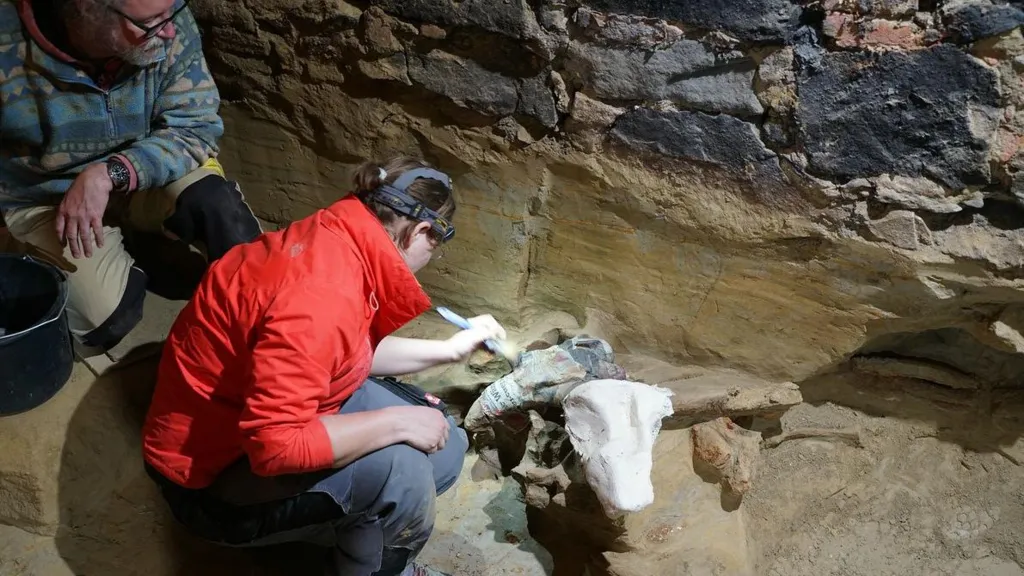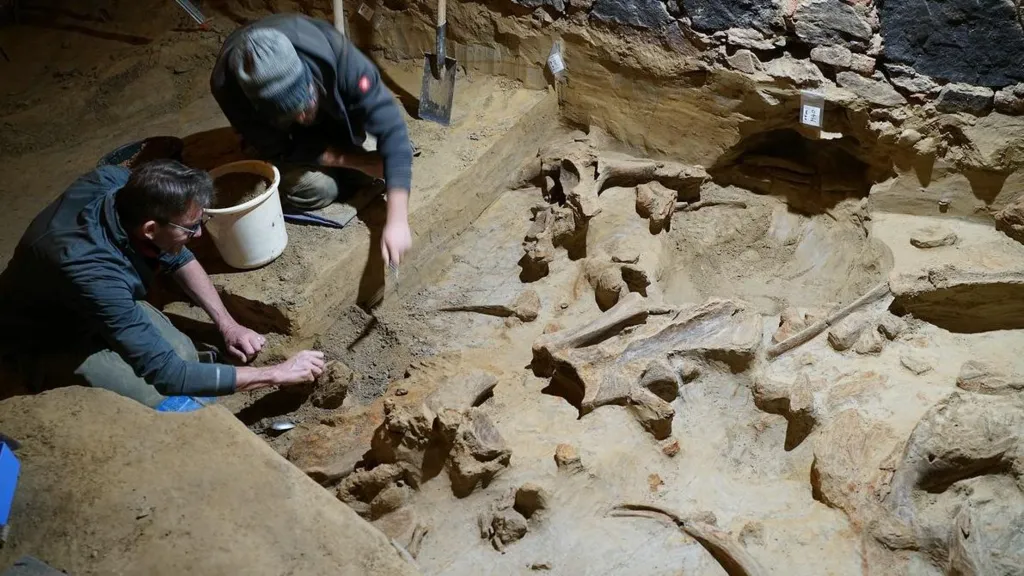Ad Code
Popular Posts
Austrian Man Discovers Mammoth Bones in Wine Cellar: A Remarkable Archaeological Find
Introduction
In a picturesque village of Gobelsburg, nestled in the district of Krems, west of Vienna, a routine renovation has led to an extraordinary discovery that has caught the attention of the archaeological community worldwide. What started as a typical project to refurbish a wine cellar transformed into an archaeological sensation when a local winemaker stumbled upon the bones of prehistoric mammoths. This rare find, hailed by researchers as a once-in-a-century event, offers a fascinating glimpse into the distant past and raises intriguing questions about human interaction with these magnificent creatures.
The Discovery
The tale begins with Andreas Pernerstorfer, a winemaker who was in the process of renovating his wine cellar. As he worked through the cellar, he came across several large, unusual bones buried deep within the earth. Initially mistaking them for old wooden remnants left by his grandfather, Mr. Pernerstorfer soon realised the significance of his find. Recalling stories from his grandfather about discovering large teeth, he suspected the bones might be of mammoth origin. His suspicions were confirmed when he reported the discovery to the authorities, and experts identified the remains as those of at least three mammoths from the Stone Age.
Excavation and Analysis
Since the middle of May, a team of archaeologists from the Austrian Archaeological Institute of the Austrian Academy of Sciences (OeAW) has been meticulously excavating the site. Led by Thomas Einwögerer and Hannah Parow-Souchon, the team has uncovered not just the mammoth bones but also stone artefacts and charcoal, which suggest that the site dates back between 30,000 and 40,000 years. This period places the find firmly within the Upper Palaeolithic era, a time when early humans were known to have coexisted with mammoths.
Historical Significance
The significance of this discovery cannot be overstated. The last comparable find in the Krems district occurred 150 years ago, and other similar sites across Austria and neighbouring countries were excavated over a century ago, often without the benefit of modern archaeological methods. The current excavation provides a unique opportunity to apply contemporary scientific techniques to gain new insights into the lives of Stone Age humans and their interactions with megafauna like mammoths.
Insights into Stone Age Life
One of the most intriguing aspects of this discovery is what it reveals about Stone Age hunting practices. While it is established that early humans hunted mammoths, the specifics of their methods remain largely speculative. The presence of stone artefacts and charcoal at the Gobelsburg site suggests that humans might have played a role in the mammoths' demise. Researchers hypothesise that the mammoths could have died on the spot, potentially trapped by humans who used sophisticated hunting strategies.
The Archaeological Process
The process of excavating the bones has been both painstaking and rewarding. The archaeologists have had to carefully document and preserve each find to ensure that valuable information is not lost. The bones' placement and condition offer clues about the environment and circumstances under which the mammoths lived and died. By studying the stratigraphy and associated artefacts, the team hopes to reconstruct a detailed picture of the site during the Upper Palaeolithic period.
Modern Techniques in Archaeology
This excavation is the first of its kind in Austria to benefit from modern archaeological methods. Advances in technology, such as radiocarbon dating and DNA analysis, allow researchers to gather more precise data about the age and lineage of the mammoths. Additionally, techniques like 3D scanning and modelling can help create accurate representations of the site and the mammoths, providing valuable resources for both scientific study and public education.
Future Research and Implications
Once the excavation is complete, the bones will be transported to the Vienna Museum of Natural History for further analysis and preservation. This will enable researchers to continue their study of the remains in a controlled environment, where they can conduct more detailed examinations and comparisons with other finds. The data gathered from this site has the potential to contribute significantly to our understanding of human prehistory and the dynamics of human-mammoth interactions.
Public Interest and Education
The discovery has not only excited the scientific community but has also captured the public's imagination. It highlights the importance of archaeological research in uncovering the hidden stories of our past and demonstrates how even routine activities, like renovating a wine cellar, can lead to significant historical discoveries. The findings from Gobelsburg will likely inspire further interest in archaeology and palaeontology, encouraging a new generation of researchers to explore the ancient world.
Conclusion
The accidental discovery of mammoth bones in an Austrian wine cellar is a reminder of the deep connections we have with our planet's history. It underscores the importance of preserving archaeological sites and continuing to explore our prehistoric past. As researchers continue to study the Gobelsburg find, we can expect new insights into the lives of our Stone Age ancestors and the majestic creatures they once hunted. This remarkable event serves as a testament to the enduring mysteries of the ancient world and the ever-present potential for new discoveries beneath our feet.









0 Comments